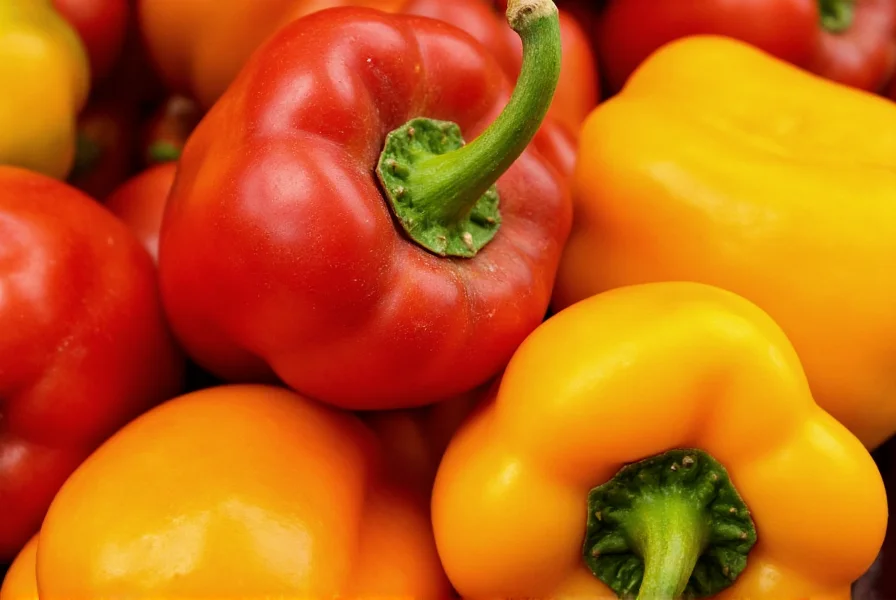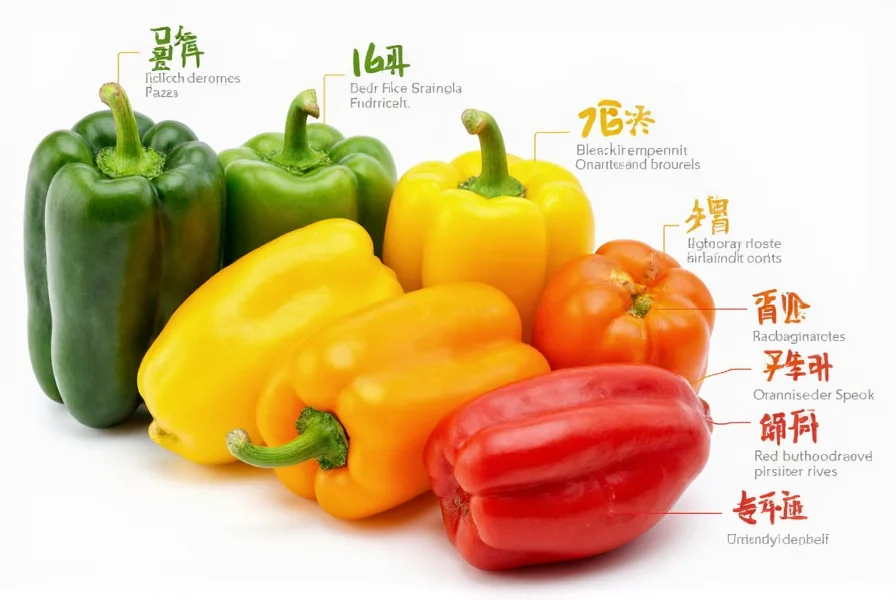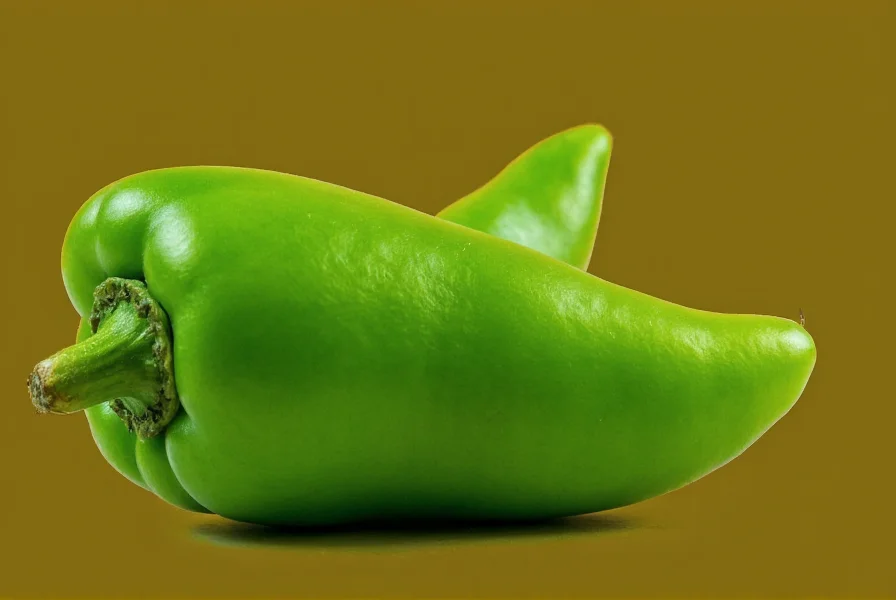Understanding the distinction between botanical and culinary classifications is essential when answering the question is a pepper a vegetable. While science provides one answer, cooking traditions offer another perspective that has shaped how we categorize these versatile plants.
Botanical Classification: Why Peppers Are Fruits
From a botanical standpoint, peppers unequivocally qualify as fruits. In plant biology, a fruit develops from the ovary of a flowering plant and contains seeds. Peppers meet this definition perfectly—they form after the pepper plant's flowers are pollinated, and their interior houses numerous seeds.
This scientific classification places peppers in the same category as tomatoes, cucumbers, and eggplants—foods commonly mistaken for vegetables. The confusion arises because our culinary traditions don't always align with botanical science.
Culinary Classification: Why Peppers Function as Vegetables
In the kitchen, peppers behave like vegetables. Chefs and home cooks categorize ingredients based on flavor profile and usage rather than scientific classification. Peppers possess a savory, sometimes slightly bitter taste that makes them ideal for:
- Sauces and salsas
- Stir-fries and sautés
- Stuffing and roasting
- Salads and side dishes
Unlike sweet fruits typically served as desserts, peppers rarely appear in sweet preparations (except for some specialty recipes). This culinary treatment has cemented their status as vegetables in grocery stores, cookbooks, and meal planning.

Historical Context of the Pepper Classification
The pepper classification confusion dates back centuries. When Christopher Columbus brought peppers to Europe from the Americas, they were named "peppers" due to their pungent quality resembling black pepper (which is botanically unrelated). This naming further complicated their classification.
In 1893, the U.S. Supreme Court case Nix v. Hedden famously ruled that tomatoes should be classified as vegetables for tariff purposes, despite their botanical classification as fruits. This legal precedent reinforced the separation between scientific and culinary classifications that still affects how we categorize peppers today.
Pepper Classification Compared to Other Produce
Peppers aren't alone in this classification paradox. Several common foods share this dual identity:
| Food Item | Botanical Classification | Culinary Classification |
|---|---|---|
| Peppers | Fruit | Vegetable |
| Tomatoes | Fruit | Vegetable |
| Cucumbers | Fruit | Vegetable |
| Zucchini | Fruit | Vegetable |
| Rhubarb | Vegetable | Fruit (culinary) |
Nutritional Profile of Peppers
Regardless of classification, peppers offer impressive nutritional benefits. Bell peppers, for example, contain:
- Exceptionally high vitamin C content (one medium red bell pepper provides 169% of daily value)
- Significant amounts of vitamin A and beta-carotene
- Various B vitamins and vitamin E
- Antioxidants like lutein and capsanthin
- Dietary fiber with minimal calories
The nutritional composition aligns more with vegetables than with typical sweet fruits, further supporting their culinary classification. Different colored peppers offer varying nutrient profiles, with red peppers generally containing the highest concentration of beneficial compounds.

Practical Implications of Pepper Classification
Understanding whether is bell pepper a fruit or vegetable matters in several practical contexts:
- Gardening: Pepper plants require similar growing conditions to other fruiting plants
- Nutrition planning: Peppers contribute to vegetable servings in dietary guidelines
- Culinary applications: Their vegetable classification affects recipe development and menu planning
- Food safety: Proper storage follows vegetable rather than fruit protocols
For home cooks wondering why are peppers considered vegetables, the answer lies in how they function in meals rather than their biological structure. This practical approach serves everyday cooking needs better than strict botanical accuracy.
Conclusion: Embracing Dual Classification
The question is a pepper a vegetable doesn't have a single correct answer—it depends on context. Botanically, peppers are fruits. Culinarily, they function as vegetables. This dual identity isn't a contradiction but rather reflects how language evolves to serve different purposes.
When discussing pepper fruit vegetable confusion, it's most helpful to acknowledge both perspectives. For gardeners and botanists, the fruit classification matters. For chefs and nutritionists, the vegetable classification makes more sense. Understanding this distinction helps prevent confusion when encountering seemingly contradictory information about peppers.
Are all types of peppers classified the same way botanically?
Yes, all pepper varieties—including bell peppers, chili peppers, and sweet peppers—are botanically classified as fruits because they develop from the flower and contain seeds. The level of capsaicin (which creates heat) doesn't affect their botanical classification.
Why do grocery stores categorize peppers with vegetables?
Grocery stores follow culinary conventions rather than botanical science. Since peppers are used in savory dishes like other vegetables, they're grouped with vegetables for practical shopping purposes. This matches how consumers typically use these ingredients.
Does the fruit classification affect how I should store peppers?
No, storage recommendations for peppers follow vegetable protocols regardless of their botanical classification. Store peppers in the crisper drawer of your refrigerator, preferably in a plastic bag with small holes for ventilation. Their storage needs align with other vegetables rather than fruits.
Are there any peppers that are classified differently?
All true peppers (members of the Capsicum genus) share the same botanical classification as fruits. Black pepper, white pepper, and other "peppers" that aren't part of the Capsicum family have different classifications, but when discussing bell peppers or chili peppers, they're consistently fruits botanically.
How does pepper classification affect nutrition guidelines?
Nutrition guidelines like MyPlate categorize peppers as vegetables. When tracking your daily vegetable intake, peppers count toward your vegetable servings, not fruit servings. This reflects their culinary usage and nutritional profile, which aligns more closely with vegetables than with sweet fruits.











 浙公网安备
33010002000092号
浙公网安备
33010002000092号 浙B2-20120091-4
浙B2-20120091-4